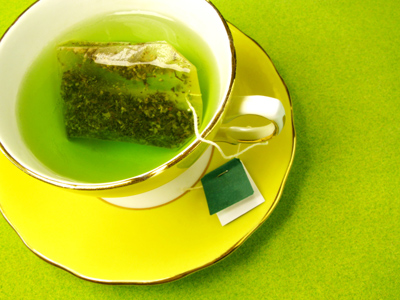
Ask the AI Tutor
Need help with Mixtures? Ask our AI Tutor!
AI Tutor - Lucy
Connecting with Tutor...
Please wait while we establish connection

The purpose of the paper of a tea bag is to filter the mixture of tea leaves and water.
Mixtures
Mixtures are everywhere, from air to alloys. KS2 Science teaches how substances combine, separate, and form new materials with useful properties.
1 .
How could a mixture of salt and sand be separated?
By sieving only
By adding water
By filtering only
By dissolving the salt in water and then filtering
Salt can be dissolved but sand can't
2 .
You are trying to clean some muddy water by using a filter. Which of these materials would you not use in building a home made filter?
Bicarbonate of soda
Cotton wool
Sand
Filter paper
Bicarbonate of soda would dissolve in the water, but it would not help to filter out the other materials
3 .
A tea bag is made from tea leaves and an especially porous paper. Besides being a container for the tea leaves, what is the purpose of the paper?
To keep the tea leaves dry
To keep the tea flavour inside the tea bag
To keep the tea leaves from burning
To filter the mixture of tea leaves and water
The paper keeps the tea leaves inside the tea bag, but allows the tea solution to pass through. This makes a cup of tea with no tea leaves in it
4 .
Which of the following is an example of a mixture?
Cake batter
Air
Sedimentary rocks
All of the above
A mixture is anything that is made up of two or more materials - most things are mixtures
5 .
Which one of the following is not a solution?
Coffee
Sweet tea
A mixture of sand and water
Carbonated water
A solution is a when two materials are thoroughly combined by dissolving - scientists call solutions 'homogeneous' mixtures
6 .
What do we call a material that will not dissolve in water or another liquid?
Impermeable
Permeable
Insoluble
Soluble
Insoluble is the opposite of soluble, and impermeable is the opposite of permeable
7 .
If you evaporated sea water, leaving the salt behind, how could you collect the water?
By filtering
By condensation
By dissolving
It would be impossible
Allowing the steam from the evaporating water to collect on a cold surface would make the water vapour condense. The liquid could then be collected in a separate container
8 .
What method would be used to separate a solution of sugar and water?
Boiling the water until it evaporated
Sieving the solution
Filtering the solution
Using a magnet
Evaporating the water would leave the sugar behind
9 .
Which of the following would dissolve in water?
Oil
Soap
Clay
Chalk
We dissolve soap in water every time we have a bath
10 .
What might you use to separate a mixture of sand and iron filings?
A filter
A sieve
A magnet
A spoon
Iron filings are too small to be caught in a sieve and sand particles are too large to pass through a filter
**Unlimited Quizzes Await You! 🚀**
Hey there, quiz champ! 🌟 You've already tackled today's free questions.
Ready for more?
Ready for more?
🔓 Unlock UNLIMITED Quizzes and challenge yourself every day. But that's
not all...
not all...
🔥 As a Subscriber you can join our thrilling "Daily Streak" against other
quizzers. Try to win a coveted spot on our Hall of Fame Page.
quizzers. Try to win a coveted spot on our Hall of Fame Page.
Don't miss out! Join us now and keep the fun rolling. 🎉
**Unlimited Quizzes Await You! 🚀**
Hey there, quiz champ! 🌟 You've already tackled today's free questions. Ready for more?
🔓 Unlock UNLIMITED Quizzes and challenge yourself every day. But that's not all...
🔥 As a Subscriber you can join our thrilling "Daily Streak" against other quizzers. Try to win a coveted spot on our Hall of Fame Page.
Don't miss out! Join us now and keep the fun rolling. 🎉






